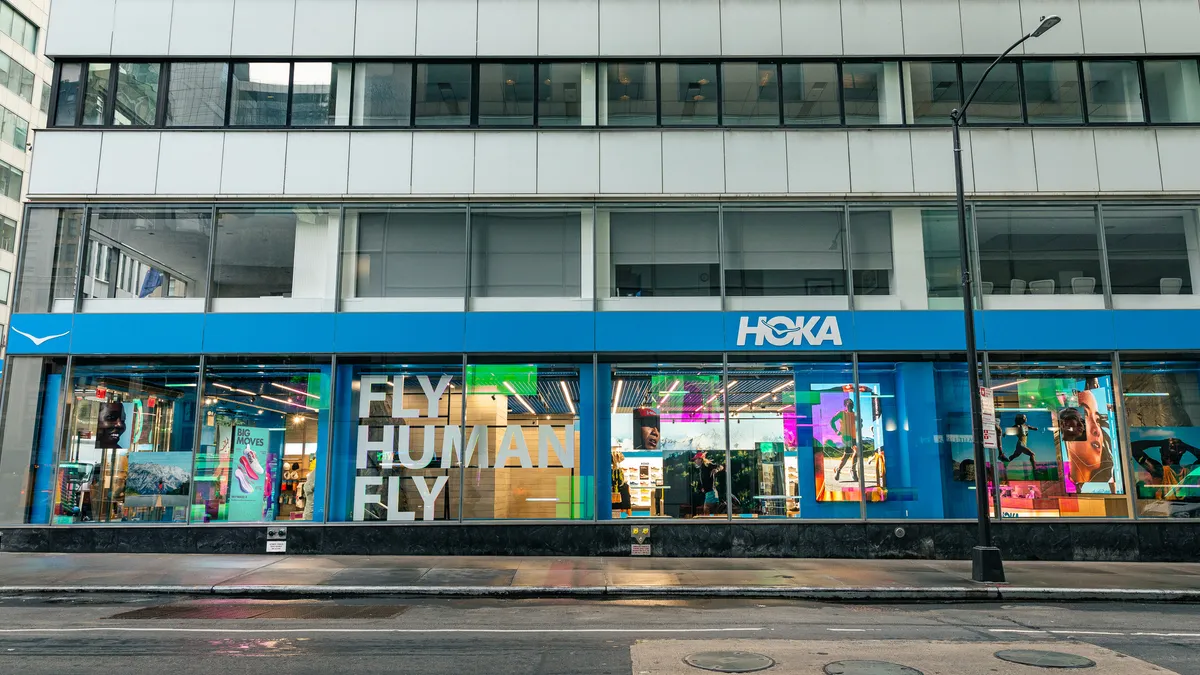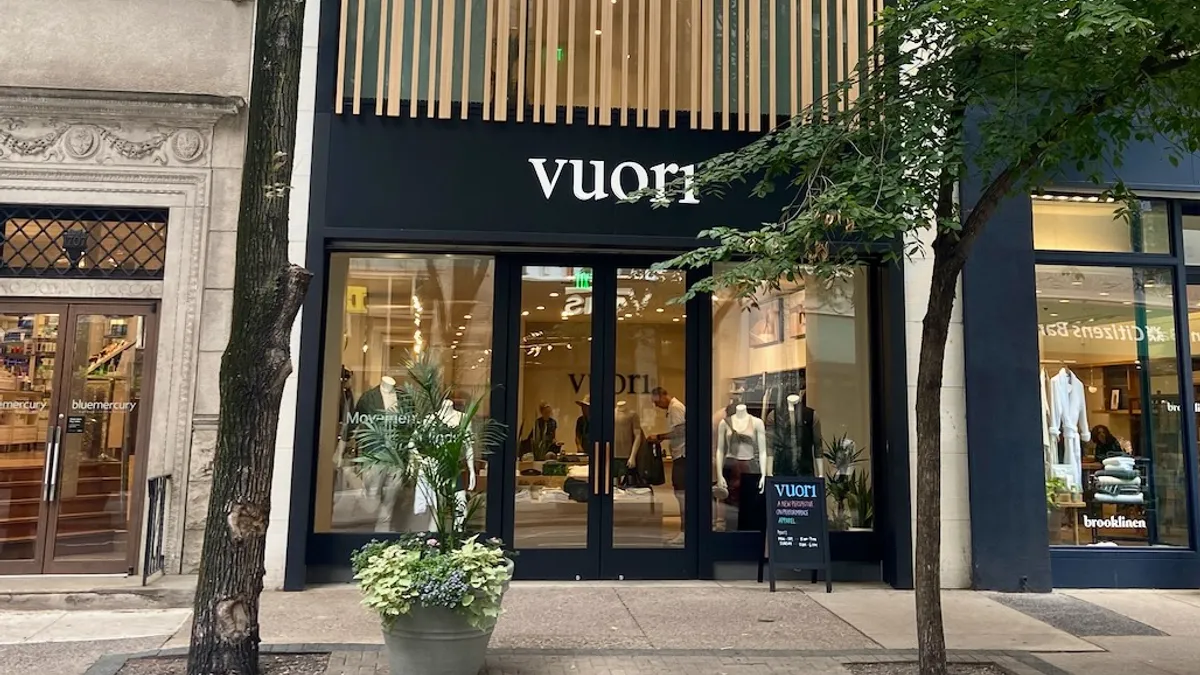Editor's Note: This story is part of a package on direct-to-consumer brands. Find the rest of the stories here.
The coronavirus pandemic gave direct-to-consumer brands a boost at a time when many in retail were hit hard. As consumers were advised to limit the number of trips to physical stores, many sought out online retailers more than ever before.
"Given the lockdown and COVID, more and more people are using online ordering and expecting to receive the shipment," said Morris Cohen, a professor of manufacturing and logistics at the University of Pennsylvania's Wharton School of Business and the co-director for the Fishman-Davidson Center for Service and Operations Management. "Going to a store to pick something up is less attractive."
However, the influx in customers shopping for goods online and discovering DTC brands also highlighted existing problems, primarily when it comes to shipping. Direct-to-consumer brands already had to handle shipping nearly every good sold to customers, but when nonessential retailers were forced to shutter stores at the beginning of the pandemic and shift their focus to also selling online, the increased demand strained the system.
According to an October report from Narvar, 36% of consumers experienced substantial shipping delays during the pandemic. The report also found that the average time between order placement and delivery handoff more than doubled from 1.9 days in February to 4.3 days in April. And even Amazon wasn't immune from experiencing disruptions that caused it to scale back its one-day delivery promises, limit assortment and postpone its annual Prime Day event typically held in July.
Now well into the holiday season, the e-commerce first trend, and subsequent supply chain pressure, doesn't appear to be subsiding. "Shipping companies are really, really facing big challenges to make deliveries for this holiday," Ken Fenyo, president of Research & Advisory at Coresight Research, said. "If you're not a big player, you may just be shut out. You may not be able to get your products to the consumer in time for the holiday because they just don't have the capacity. If you're smaller, you're not going to be one of the ones they clear room for."
But even prior to the shipping headaches brought on by the pandemic, DTC brands faced their own struggles.
The pressure to offer fast and free delivery
Amazon has fueled consumer expectations for fast delivery and to do it at no cost to the consumer. In fact, according to a Scalefast report from early March, 43% of consumers said they would choose to shop with Amazon over a direct-to-consumer brand because the e-commerce giant offers cheaper or free shipping, while 36% preferred Amazon because it ships faster.
"Consumers dislike paying for shipping. They're not very tolerant of delays or lack of information," Fenyo said.
But for direct-to-consumer companies that are operating at a fraction of Amazon's size, meeting those expectations can be challenging.
"I know for a fact that some of them have regret," Santiago Gallino, a professor of operations, information and decisions at University of Pennsylvania's Wharton School of Business, said. Some direct-to-consumer brands have been "starting with some very generous policies in terms of delivery and returns because it's a great tool to acquire a customer. But then as you grow, it can become very costly to maintain and to keep that promise."
"If you're selling fashion apparel, you may end up with three, four shippings every couple of months to the same customer. I think that in that case, the shipping, and the returns especially, have a big impact on the whole operation."

Santiago Gallino
Professor of operations, information and decisions, University of Pennsylvania's Wharton School of Business
Direct-to-consumer brands, at their size, can't compete with a behemoth like Amazon on free 24- or 48-hour delivery, according to Michael Felice, a principal in the consumer practice of Kearney. "Push that back ... and maybe reinvest 10% to 20% into consumer experience and building the brand, which will also build that repeatability of the purchase and the overall customer loyalty," he said.
Aside from increasingly difficult expectations around delivery, brands also have to consider other logistical hurdles when they're operating almost entirely online. Gallino said it comes down to two things when considering the costs companies grapple with when shipping their products: the size of the product and the frequency of shipments.
A company like Casper may have a harder time with the former because "delivering a mattress — it's bulky, it's big, it's scary." But it's also important to note, mattresses are a fairly infrequent purchase, so volume is less of an issue for them than it is for those selling in other categories online. When considering an apparel retailer like Bonobos, though, the products "are usually not so heavy, but [there are] a lot more shippings," Gallino said. "If you're selling fashion apparel, you may end up with three, four shippings every couple of months to the same customer. I think that in that case, the shipping, and the returns especially, have a big impact on the whole operation."
Handling returns
There's a level of uncertainty buying products online when the consumer can't touch and feel the product before purchasing, increasing the likelihood of returns. According to Narvar, 62% of consumers reported bracketing this year — buying multiple versions of the same item to try on and see which one works best — representing a 50% increase in just three years.
"Shipping is expensive," Fenyo said. "It's prone to delays that you can't necessarily control, and your returns become a very big headache because not only are you paying for the shipping on the way out, assuming you're offering free shipping ... you have to pay for it on the way back as well."
Casper, for example, offers free shipping and returns, and will actually send someone into your home to pick up larger items, like its mattresses. According to its policy, returned mattresses and other large products will be recycled or donated to a local charity, though some localities require the brand to dispose of the bed, making return mitigation especially dire to prevent wasted product. However, Casper accepts returns of smaller items like dog beds, bedding and pillows to most of its brick-and-mortar locations.
And while brands tend to open physical locations to serve as a marketing tool in acquiring customers, they certainly help make consumers feel more confident in their purchases, Gallino said. But even more, they serve as an access point for the customer to pick up and return goods, helping to mitigate costs.
Coresight anticipates that more physical stores will serve as "mini fulfillment centers," particularly in areas that are densely populated, CEO Deborah Weinswig said in a recent report emailed to Retail Dive.
Some brands have also formed partnerships with traditional retailers, for example Quip and Versed have formed partnerships with Target. However, "depending on the end product value, many of these [shipping] costs are preferable to margin loss via a retail partner," John Carey, managing director in the technology practice of AArete, said in an email.
Another strategy brands can adopt to help prevent returns from the start is ensuring product pages are well detailed and investing in tech to provide greater clarity. Furniture brand Burrow incorporated an augmented reality feature on its website so consumers could see what products would look like in their own homes, while Glossier added images of what its makeup shades would look like on various skin tones to its product pages.
Of course, it's impossible to do away with 100% of returns, Felice said, "but trying to mitigate them with order accuracy and creating a real augmented feel for the consumer is important."
The problems with last mile
A large purchase like a sofa is delivered and set up inside the home, so a poor delivery experience can really make or break a customer's perception of a brand. A majority of brands outsource their last-mile to third parties, which allows the brand itself to focus on other areas of growing the business, but it may introduce new problems.
"Most of these companies, when they reach a certain scale, they use third-party vendors that provide this service for them," Gallino said. "Then they can focus on their strength — that is developing the brand, thinking about new products, answering questions and helping support customers. They are not focused or worried about their fulfillment, managing returns and so on and so forth."
But that also places control of the last-mile experience into those third parties, which may not have a vested interest in creating lasting bonds with the customer. Anything that goes wrong in the experience — not showing up on time, tracking mud in the home or damaging the product — the customer will associate with the brand itself. And for an investment piece like a sofa — a purchase made somewhat infrequently — it's particularly important for brands to form lasting bonds and retain customers.
A bad delivery experience is "basically throwing away all the effort that has been made in acquiring the customer. Making the customer have a great experience online and then losing that momentum with the customer at the moment of the delivery," Gallino said.
Article, an online furniture and home decor brand, in January 2019 launched an in-house delivery service in order to have more control over the end-to-end customer experience. The brand cited the complexity of delivering large items, often resulting in a poor delivery experience for the consumer, as the reason why it brought last-mile delivery in house. When it launched, Article said negative feedback had gone down as much as 83% in areas where the service was deployed.
"Article's high-value product and the extensive range of furniture it offers make it more attractive to incorporate an end-to-end service, extending all the way to the customer's front door," Carey said.
Brands employing last-mile delivery personnel also allows them to have a physical touchpoint with customers if they don't operate offline. And, in the case of Article, the delivery trucks driving around cities serve as an additional marketing channel. "When direct-to-consumer brands lack street presence in the form of stores, you could think of their trucks as street presence in the form of mobile billboards," Carey said.
But taking on the responsibility of handling last-mile can introduce new obstacles, including limiting a brand's ability to enter new markets both domestically and internationally, Carey added. Making delivery a key focus of the business also poses the risk of "taking your eye off customer acquisition, engagement, community, loyalty," Felice said.
And for the categories that ship smaller goods that don't require setup upon arrival, the benefits of an in-house delivery service may not outweigh the costs involved. Instead, those brands should focus on other aspects of improving the customer experience, including packaging and how a brand presents its products when someone from its team isn't handing the package to you.
"Not losing track of the experience with the customer post-purchase to delivery, I think is critical in owning that excitement when they open [the package]," Felice said.























